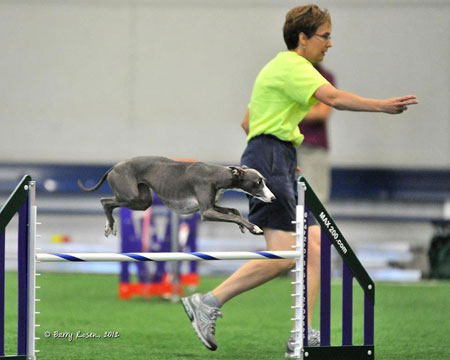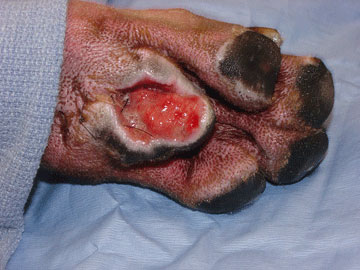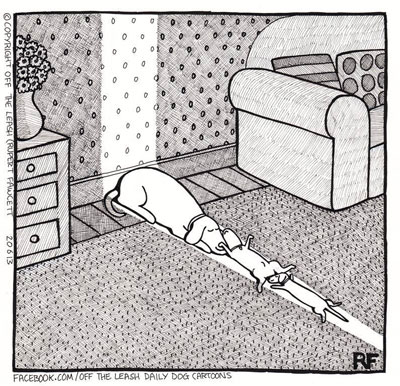Page 13 < previous page > <next page>
SOME HEALTH & SCIENCE NEWS
|
Patty & MACH Danablue Angell clinical pathologist Dr. Patty Ewing (http://www.mspca.org/vet-services/angell-boston/pathology/anatomic-pathology-meet-the-team.html) identified morula in neutrophils from this adult Golden Retriever’s cerebrospinal (CSF) sample. The dog presented with acute onset of neurologic signs that included facial twitching and head jerking (considered to represent mild partial seizures). Morula were also found in approximately 3% of neutrophils in peripheral blood. Both Anaplasma phagocytophilum (canine granulocytotropic anaplasmosis) and Ehrlichia ewingii (canine granulocytotropic ehrlichiosis) can produce morula in neutrophils. In this region of the country, most of the infections are due to Anaplasma phagocytophilum. Serology may be negative when organisms are found in neutrophils because the finding typically represents the acute phase of the infection. PCR tests for Anaplasma phagocytophilum and Ehrlichia spp on the patient’s peripheral blood were negative. The dog’s clinical signs resolved following treatment with doxycycline. Without the cytology finding, the diagnosis would not have been made until 3 weeks later when the dog’s serology for Anaplasma phagocytophilum converted to positive. Neurologic symptoms (seizures and proprioceptive deficits) are infrequently reported (2 of 17 dogs in one retrospective study) in dogs with anaplasmosis. Foot pad trauma & disease.
|
Babies Perk up to sounds of ancient Hazards Circovirus PROPERLY PROPERLY ADMINISTERING THYROID MEDICATION TO YOUR DOG ORIGINAL DOGS HAD THE SAME COLOURING JOHN BRADSHAW ANIMAL BEHAVIOUR REDUCE INFLAMATION CERF address change:
|
Blood Typing
A good reason for blood-typing has to do with the possibility of fading puppy syndrome. This is similar to the human Rh factor incompatibility, when the Mother is Rh negative and Father is Rh positive. If you breed a dog with one blood type to a bitch with another, the first time you do it, everything will be okay. If you repeat the breeding, or breed this bitch to another dog with the same blood type as the first mate, however, the bitch previously sensitized by the first mating will develop antibodies to that sire's blood, and puppies carrying the blood type of the sire can die, once they suckle the dam's colostrum, which is carrying these anti-sire's blood type antibodies.
Canine neonatal isoerythrolysis (NI):
1) May occur if a DEA 1.1 negative bitch who has been previously sensitized to DEA 1.1 positive cells by a mismatched blood transfusion is bred to a DEA 1.1 positive male dog, and she produces DEA 1.1 positive pups. (DEA 1.1 positive bitches are not at risk for producing pups that develop neonatal isoerythrolysis)
2) Dog placenta does not allow for passive transfer of antibody (ie - anti-DEA antibody) during pregnancy. DEA 1.1 positive puppies are exposed to DEA 1.1 antibody through colostrum ingestion
3) Pups are normal at birth and develop hemolytic anemia in 3-10 days.


